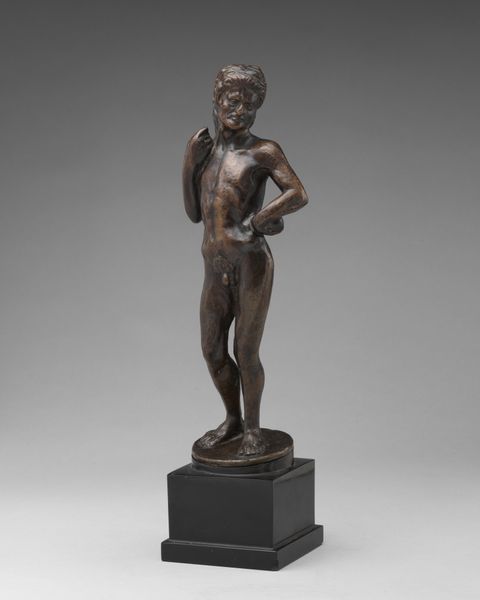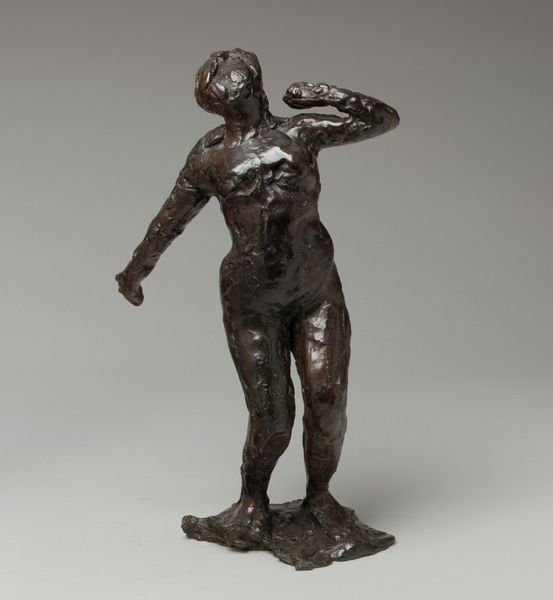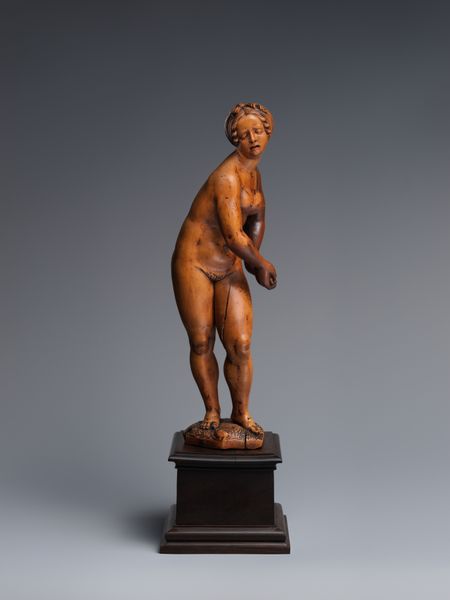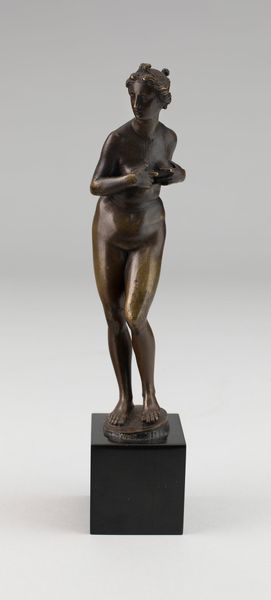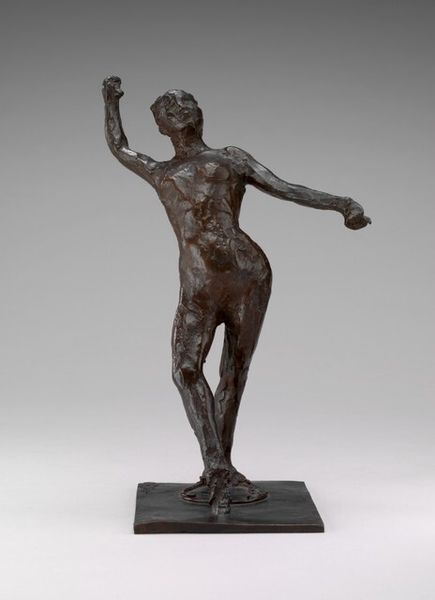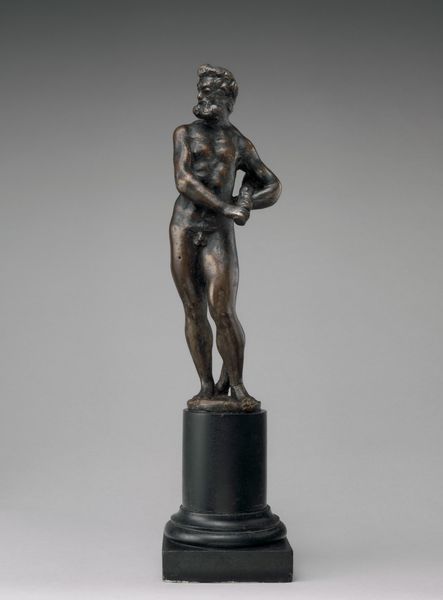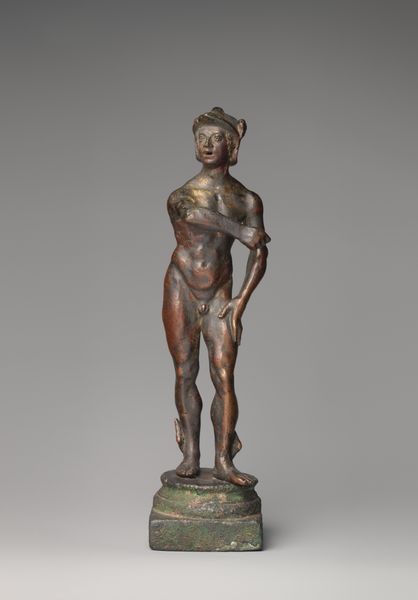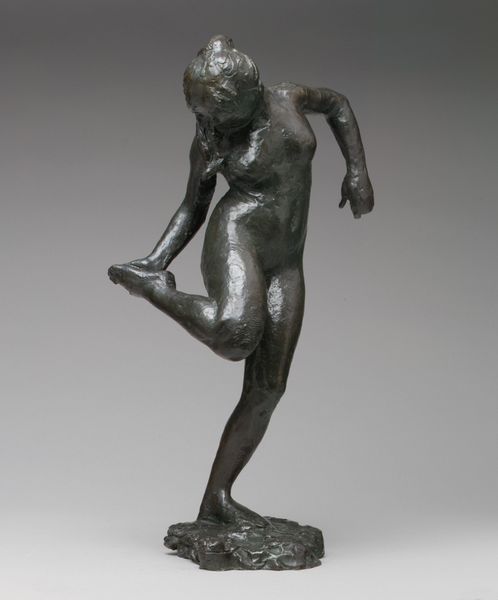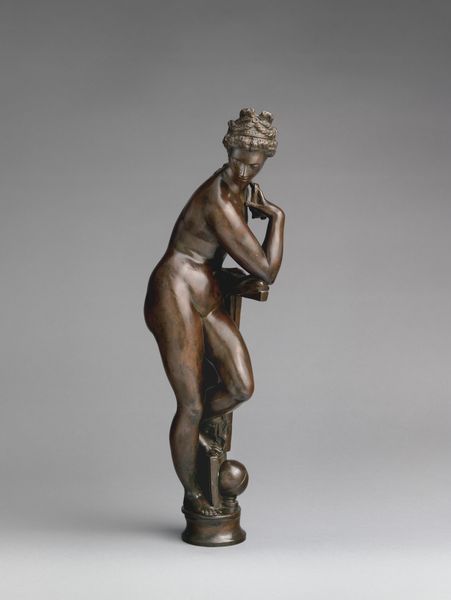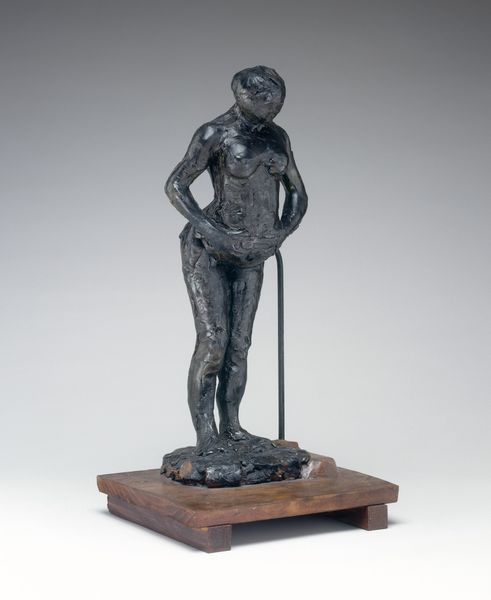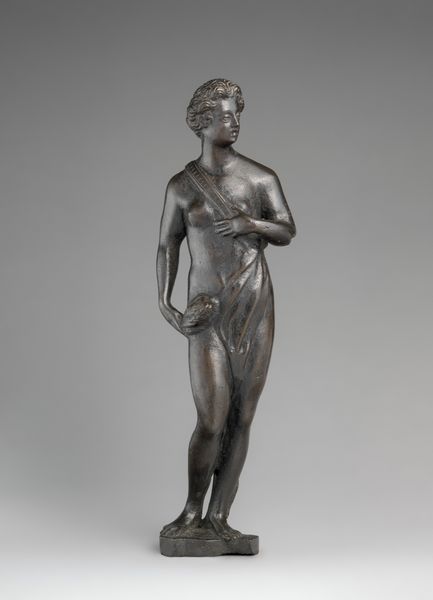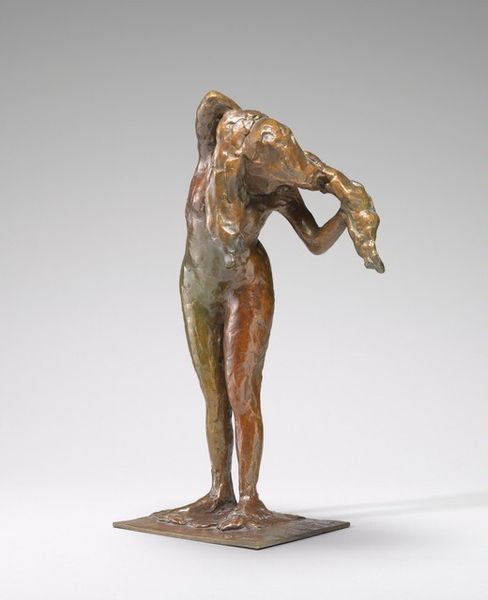
bronze, impasto, sculpture
#
statue
#
impressionism
#
sculpture
#
bronze
#
figuration
#
impasto
#
sculpture
#
academic-art
#
nude
#
realism
#
statue
Dimensions: overall without base: 43.2 x 20.6 x 20.1 cm (17 x 8 1/8 x 7 15/16 in.) height (of figure): 42.5 cm (16 3/4 in.)
Copyright: National Gallery of Art: CC0 1.0
Curator: Here we have Edgar Degas's sculpture, "Dancer Fastening the String of Her Tights," crafted in bronze, dating from around 1885 to 1890. What are your first impressions? Editor: My immediate feeling is one of vulnerability and perhaps slight discomfort. Her posture is a bit awkward, her head is tilted away, like she doesn't want to be observed in this private moment. Curator: That's interesting. For me, her averted gaze hints at modesty but I see defiance. In ballet, there is a duality in its rigorous, almost militaristic demand on bodies, coupled with performance, thus, unveiling to audiences and submitting to be seen. Editor: Absolutely, it’s that push and pull, that inherent contradiction, that makes this piece so compelling. Ballerinas have been exploited in cultural consciousness, with male spectatorship rampant then as it is now. The subject is rendered here at this precarious state between objectification and agency. Curator: Her nudity and bowed neck definitely reference antiquity and classical sculpture. It calls upon these pre-existing signifiers to elevate the everyday task to the level of fine art. However, what breaks that connection to Neoclassical order is the evident surface treatment. We see traces of his fingers. We sense Degas’s hand actively building and manipulating the wax. It is very sensual, not polished. Editor: Agreed. Degas has laid bare both the model and his process. It refuses the romanticization or idealization, confronting the viewer with the physical realities of labor and the body. She's caught between identities, a working-class individual and a performer under the male gaze. Curator: We can see this juxtaposition in his painting too, and sculpture allowed him to realize and examine that concept further in three dimensions. It has this powerful capacity of conveying multiple and contradicting concepts. Editor: Yes, seeing the sculpture allows us to almost physically revolve around the dancer, and so we get this fuller vision of the struggles that ballerinas had to grapple with, struggles that are relevant still today. Curator: And to think he explored these nuances nearly a century and a half ago, rendering those truths through lasting form. Editor: I think the rawness of form really enables Degas' message, creating a profound conversation on spectatorship, labor, and objectification which holds up even today.
Comments
No comments
Be the first to comment and join the conversation on the ultimate creative platform.
